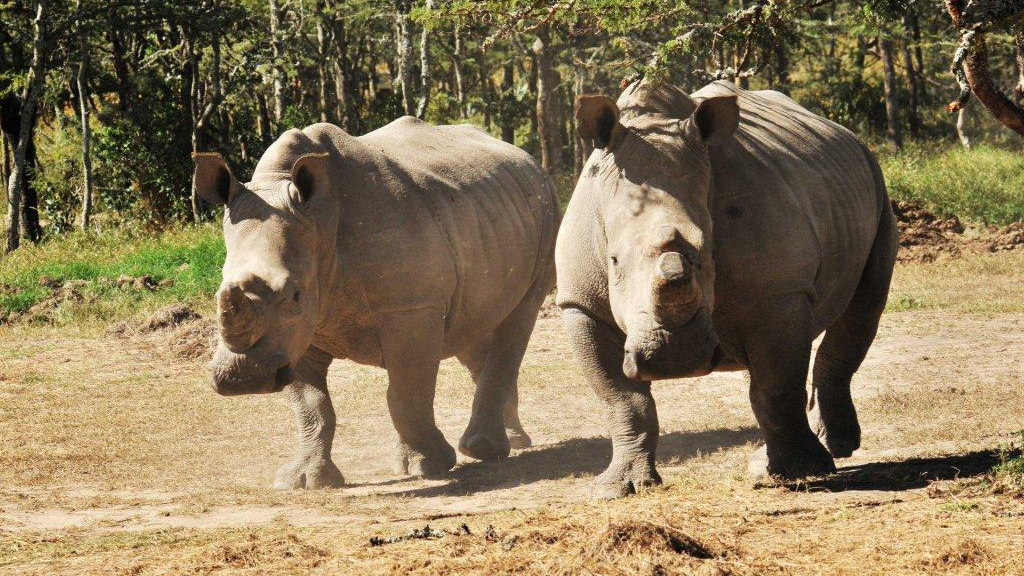
FILE PHOTO: Kenya's wildlife management authority on Thursday reported the birth of a calf of a white rhino in Meru National Park in Meru County, about 348 kilometres east of the capital Nairobi. /Kenya Wildlife Service
FILE PHOTO: Kenya's wildlife management authority on Thursday reported the birth of a calf of a white rhino in Meru National Park in Meru County, about 348 kilometres east of the capital Nairobi. /Kenya Wildlife Service
Kenya's wildlife management authority on Thursday reported the birth of a calf of a white rhino in Meru National Park in Meru County, about 348 kilometres east of the capital Nairobi.
"The mother, named Jenifer, is believed to have given birth to a bouncing male baby about four days ago," the Kenya Wildlife Service said on Twitter.
According to the KWS, the calf’s mother has given birth to six other calves since 2006 when it was translocated from Solio ranch in central Kenya to Meru rhino sanctuary.
"We are glad the number of the endangered species is growing with several births reported in the recent past," it added.
Rhino numbers have dropped dramatically in recent years due to poachers killing the animals to supply the black market with their horn.
In December, two southern male white rhinos were killed following an attack by poachers at the highly secured and privately-owned Lewa Wildlife Conservancy in the northern part of Kenya.
However, recently, there has been a rise in optimism after an increase in births of white rhino calves. In February, a rhino calf was born in the Nairobi National Park.
In Africa, southern white rhinos, once thought to be extinct, now thrive in protected sanctuaries and are classified as near threatened, according to the World Wildlife Fund for Nature (WWF). However, it added, the western black rhino and northern white rhinos have recently become extinct in the wild. The only two remaining northern white rhinos are kept under 24-hour guard in Ol Pejeta Conservancy in Kenya.
(With input from Kenya Wildlife Service)